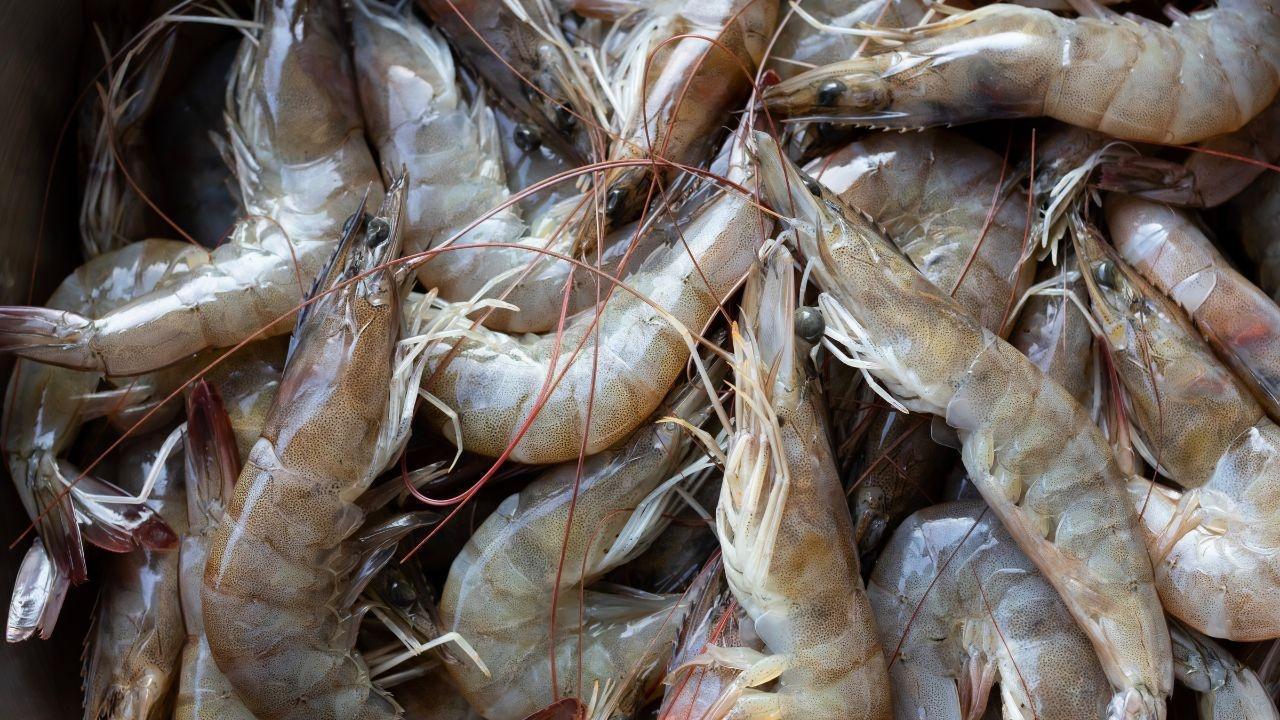
Post by : Bianca Suleiman
Kolkata, India – In Nandigram, West Bengal, shrimp farmer Buddhadeb Pradhan is taking a significant risk that could determine his future. Just weeks post-harvest of his first shrimp crop, he has chosen to initiate a second cycle, even with the high likelihood of disease from consecutive harvests. This decision stems not from desire but from dire necessity: declining shrimp prices due to new US tariffs jeopardize his financial stability.
As the second-largest shrimp exporter globally after Ecuador, India exported $5 billion worth of frozen shrimp for the year ending March 2025, with almost half directed to the United States. The tariffs from the US have forced farm prices down from 300 rupees ($3.38) per kilogram to 230 rupees ($2.59), even as production costs remain at 275 rupees ($3.10). This growing disparity in costs is pushing farmers like Pradhan into a financially perilous situation.
“I’m anxious about recouping my investment of 300,000 rupees with the dropping prices,” laments Pradhan. Other local farmers, like Nardu Das, voice concerns that without intervention for market stabilization, financial disaster looms, prompting some to consider extreme measures. Shrimp farming is inherently expensive, requiring loans, feed, energy, and land leases, and the combination of disease outbreaks and price declines is driving many to the edge.
India predominantly farms two shrimp varieties: black tiger and Pacific whiteleg, or vannamei. While vannamei can be cultivated in two cycles annually – February to June and July to October – the risks associated with the second cycle make farmers apprehensive. Black tiger shrimp is harvested once a year, typically from March to August. The coastal states of West Bengal, Gujarat, Odisha, Andhra Pradesh, Tamil Nadu, Goa, Maharashtra, Karnataka, and Kerala are the heart of production, employing approximately 10 million people across farming, hatchery, and processing operations.
The US tariffs, which include countervailing and anti-dumping duties exceeding 58 percent, pose a serious threat to Indian farmers’ access to their primary market. In contrast, Ecuador exports superior quality vannamei shrimp to the US at significantly lower tariffs of just 15 percent. In the first three quarters of 2025, Ecuador’s US exports rose by 14 percent year-on-year, totaling 1,038,208 metric tonnes valued at $5.51 billion.
The ramifications extend beyond individual farms. India’s 550 private shrimp hatcheries, responsible for producing around 80 billion seeds each year, are witnessing a sharp decline in demand. With half already shuttered, hatchery owners are incurring major losses, especially since shrimp seeds only last three to four days.
Industry experts highlight that Indian farmers rely on imported brood stock from the US, but inconsistent quality often results in disease outbreaks. Coupled with the challenges posed by tariff-induced price drops, this has amplified calls for the development of local brood stock to ensure farming stability.
As the US market continues to become less accessible and Ecuador gains an advantage, Indian shrimp farmers are carefully considering their next moves. Some are looking towards the largely untapped domestic market for potential opportunities, while others brace for difficult months ahead, aiming to balance financial risks with survival.










Paramount+ Wins Five-Year Deal to Stream PBR’s 'Unleash the Beast'
Paramount+ has inked a five-year streaming agreement to carry PBR's Unleash the Beast live from Dece

Zohran Mamdani's Historic NYC Win Marked by Bollywood Finale
Zohran Mamdani captured the New York mayoralty — the city's first Muslim and South Asian mayor — and

Indian Tennis Veteran Rohan Bopanna Ends Illustrious Career
Rohan Bopanna retires from tennis at 45 after winning two Grand Slams, becoming world number one, an

Babar Azam Becomes Top Run Scorer In T20I Cricket History
Pakistan’s Babar Azam has overtaken India’s Rohit Sharma to become the highest run-scorer in men’s T

BTS Comeback 2026 Group Plans Biggest-Ever Global Tour
BTS is set for a long-awaited comeback in 2026, followed by a massive 65-city world tour. Fans hope

India Stuns Australia to Reach Women’s World Cup Final
India shocked seven-time champions Australia in the Women’s World Cup semi-final, chasing 339 runs w